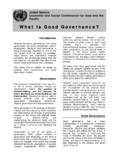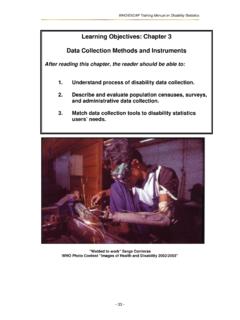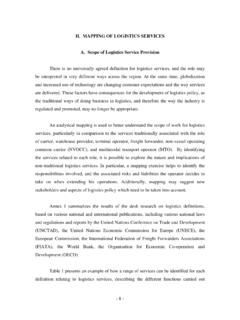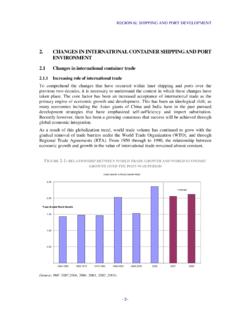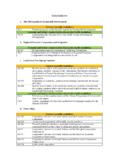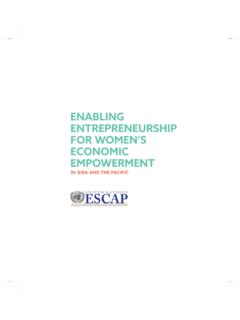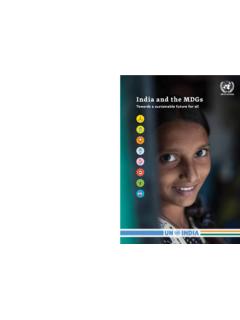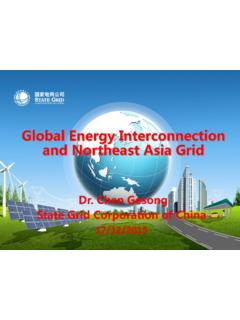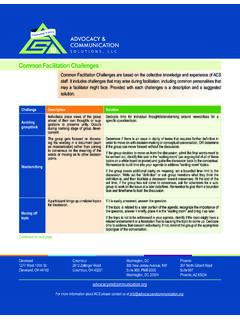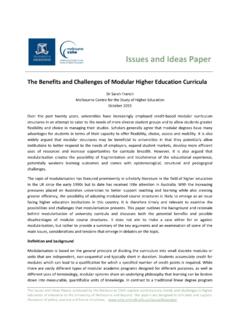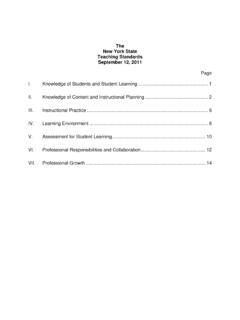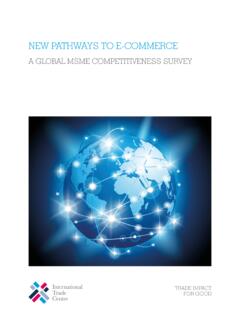Transcription of Intelligent Transportation Systems for Sustainable ...
1 1 Intelligent Transportation Systems for Sustainable Development in Asia and the Pacific Working Paper by the Information and Communications Technology and Disaster Risk Reduction Division 2 The secretariat of the Economic and Social Commission for Asia and the Pacific (ESCAP) is the regional development arm of the United Nations and serves as the main economic and social development centre for the United Nations in Asia and the Pacific.
2 Its mandate is to foster cooperation among its 53 members and 9 associate members. It provides the strategic link between global and country-level programmes and issues. It supports Governments of countries in the region in consolidating regional positions and advocates regional approaches to meeting the region s unique socioeconomic challenges in a globalizing world. The ESCAP secretariat is in Bangkok. Please visit the ESCAP website at for further information. The cover: The cover image depicts the Incheon Grand Bridge and the Incheon International Airport Highway, Republic of Korea. The illuminated highway path recalls lit fibre optic cables.
3 Image source: UNESCAP The shaded areas of the map indicate ESCAP members and associate members. 3 Disclaimer: IDD working papers should not be reported as representing the views of the United Nations. The views expressed herein are those of the authors, and do not necessarily reflect the views of the United Nations. Working papers describe research in progress by the author(s) and are published to elicit comments and to further debate. This paper has been issued without formal editing and the designations employed and material presented do not imply the expression of any opinion whatsoever on the part of the Secretariat of the United Nations concerning the legal status of any country, territory, city or area or of its authorities or concerning the delimitation of its frontiers or boundaries.
4 Correspondence concerning this paper should be addressed to the e-mail: 4 Acknowledgments The working paper has been prepared under the overall direction of Shamika Sirimanne, Director of the ICT and Disaster Risk Reduction Division, ESCAP. The paper has been prepared by R mi Lang of the ICT and Development Section of ESCAP, based on a study by Professor Jung Hoon Lee of the Graduate School of Information, Yonsei University, Republic of Korea with substantive contributions from Tiziana Bonapace, and Atsuko Okuda, Chiefs of ICT and Development Section of ESCAP. Additional contributions were received from researchers in the ISi Lab (Dong Ug Seo, Da Som Kim, Hye Won Lee, Beop Keun Jeong and In Sook Jeon).
5 Peter O Neill of ESCAP s Transport Division and Abdelmoudha Ghzala provided comments. Kim Atkinson edited this paper. Ria Sen assisted with the compilation, design and editing. Tarnkamon Chantarawat and Sakollerd Limkriangkrai undertook the related administrative processing and provided other necessary assistance for issuance of the paper. This paper has been produced with the support of the United Nations Development Account 8th Tranche project entitled Deepening Regional Connectivity: Strengthening Capacities of Asian Developing Countries to Increase Intra-regional Trade by Implementing Paperless Trade and Transport facilitation Systems .
6 5 Contents I. Intelligent Transport Systems in A. The Urban Setting and Its Development B. Defining Intelligent Transport Systems ..11 C. ITS and Sustainable II. Overview of ITS Applications and A. Supporting Infrastructure and B. Vehicle-to-Everything , an Emerging Core C. The Co-operative D. Advanced Transportation Management III. Policy and Regulatory Requirements for ITS A. Big Data and Privacy B. Using Open Data in Building C. Improving the Transport of D. Designing Master Plans and Formulating E.
7 Partnership Models for ITS IV. Regional cooperation for A. The Asia-Pacific information superhighway and fibre optic cables for B. Fostering a cadre of ITS experts through investment in ITS C. Diversifying ITS services through allocating and improving frequency bandwidth fibre D. Developing a global ITS reference model and adopting relevant national master plans ..34 E. Building ITS capacity through regional public private partnership F. Fostering open innovation through open data initiatives and G. The way 6 Text Boxes and Figures Table 1: Definitions of ITS by different institutions or countries 11 Box 1: Electronic Toll Collection Systems in India 16 Box 2: The Asia-Pacific information superhighway initiative 19 Box 3: Real-time traffic information and traffic condition prediction in Bangkok, Thailand 22 Box 4:Creating new bus routes in Seoul with big data 25 Box 5: Open data application in Seoul 26 Box 6: European plan for deploying ITS 29 Box 7: Partnering to develop a cashless system 31 Figure 1.
8 ITS service development stages by country 24 7 List of acronyms AIM Advanced Incident Management API Application Programming Interface APTS Advanced Public Transportation System AT C Advanced Traffic Control AT IS Advanced Traveller Information System AT MS Advanced Transportation Management System AVI Automatic Vehicle Identification BIS Bus Information System BRT Bus Rapid Transit BTO Build Transfer Operate CALM Communication Air-Interface, Long and Medium range CBTS Cashless Bus Ticketing System C-ITS Cooperative Intelligent Transport System(s) CVO Commercial Vehicle Operation System DSRC Dedicated Short-Range Communication ETCS Electronic Toll Collection Services GIS Geographical Information Systems GPS Global Positioning System IoT Internet of Things IPTV Internet Protocol Television ISO International Organization for Standardization ITS Intelligent Transport System(s) OBE On-Board Equipment RSE Roadside Equipment V2I Vehicle to Infrastructure V2V Vehicle to Vehicle V2X Vehicle to Everything VDS Vehicle Detection Systems VII Vehicle Infrastructure Integration VMS Variable Message Sign Wibro Wireless Broadband Internet 8 Preface Asia-Pacific is becoming increasingly urban.
9 A trend reflected in much of the developing world. The share of urban population is expected to grow from its current level in Asia of 48 per cent to 64 per cent by 2050. Long-term economic prospects show that prosperity among urbanites will also grow, and therefore the demand for public and individual transport will increase. Consequently, car ownership is likely to continue its rapid rise. China alone gained an additional 17 million new cars in 2014, taking ownership to a record 154 million. As an obvious consequence, road traffic congestion can be expected to become more intricate, further exacerbating already high negative environmental, social and economic impacts.
10 Information and communications technology can mitigate these impacts. Applications of information and communications technology in the transport sector, have led to the development of so-called Intelligent transport Systems (ITS). ITS improve traffic efficiency and safety, with positive outcomes for Sustainable development. Though driven initially mostly by the more advanced countries (United States, Japan, and some European countries), ITS are increasingly being used by developing countries, which are confronted with urgent needs to improve traffic in rapidly growing cities. ITS are also becoming increasingly tailored to the specific needs of developing countries, and recent evolutions in information and communications technology such as the analytical power offered by open and big data further raise the prospects for ITS to be designed within developing countries in response to their specific needs.
